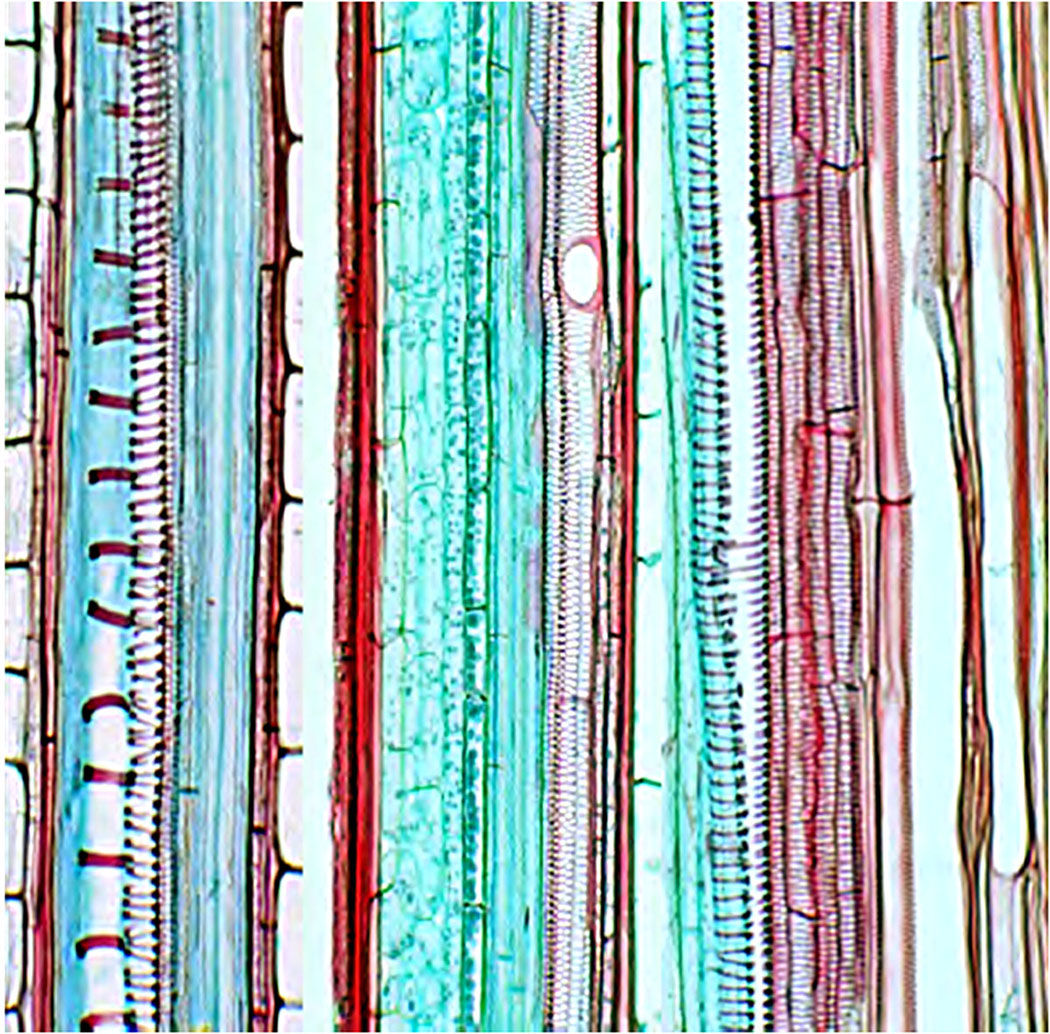Zea
|
Family: Poaceae |
Plants annual or perennial; monoecious, inflorescences unisexual or bisexual with the pistillate spikelets basal and the staminate spikelets distal. Culms (0.2)0.5-6 m tall, 1-5 cm thick, solitary or several to many together, monopodial, often branching (branches frequently highly reduced and hidden within the subtending leaf sheath), usually succulent when young, becoming woody with age; lower nodes with prop roots; internodes pith-filled. Leaves not aromatic, cauline, distichous; sheaths open; auricles sometimes present; ligules membranous, shortly ciliate; blades 2-12 cm wide, flat. Pistillate or partially pistillate inflorescences terminal on axillary branches; staminate inflorescences (tassels) paniculate, of 1-many branches or rames, sometimes with secondary and tertiary branching. Wild taxa: Pistillate inflorescences solitary, distichous rames (ears), these often tightly clustered in false panicles, each usually wholly or partially enclosed by a thin prophyll and an equally thin bladeless leaf sheath; rames composed of 5-15 spikelets in 2 ranks; disarticulation in the rame axes, dispersal units (fruitcases) consisting of an indurate, shiny rame segment and its embedded spikelet. Pistillate spikelets solitary, sessile, with 1 floret; pedicels and pedicellate spikelets suppressed; lower glumes exceeding the floret, indurate on the central, exposed portion, hyaline on the margins, concealing the caryopses at maturity. Domesticated taxon: Pistillate inflorescences solitary, polystichous spikes (ears) terminating reduced branches, each spike surrounded by several to many, often bladeless leaf sheaths and a prophyll (husks), with 60-1000+ spikelets in 8-24 rows, neither spikes nor spikelets disarticulating at maturity. Pistillate spikelets in subsessile pairs, each spikelet with 1 functional floret; glumes shorter than the spikelets, indurate basally, hyaline distally; lower florets suppressed. All taxa: lemmas and paleas hyaline, unawned; lodicules absent; ovaries glabrous; styles (silks) 2, appearing solitary by being fused except at the very tip, filamentous, sides stigmatic. Caryopses subspherical to dorsally compressed; hila round; embryos about 2/3 as long as the caryopses. Wild taxa: Staminate panicles terminal on the culms and primary branches, sometimes also on the secondary branches and pistillate inflorescences; rames distichous, similar in thickness and structure, axes disarticulating below the sessile spikelets after pollination, abscission layers evident. Domesticated taxon: Staminate panicles terminal on the culms, central axes always much thicker than the lateral branches and irregularly polystichous, lateral branches distichous to more or less polystichous, not disarticulating, without abscission layers below the sessile spikelets. All taxa: Staminate spikelets in sessile-pedicellate pairs, each with 2 staminate florets; glumes membranous to chartaceous, stiff to flexible, sometimes with a pair of winged keels, 5-14(28)-veined, acute; lemmas and paleas hyaline; lodicules 2; anthers 3. x = 10. Name from the Greek zea or zeia, a kind of grain. |

